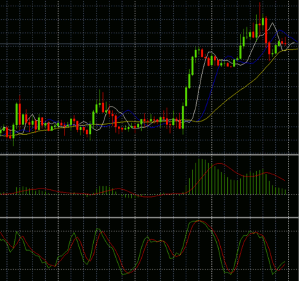Price action trading is based on the tenet that the charts we see reflect the beliefs of all market participants, trading a specified market, at a given time, writes Nick Simpson of Forex-FX-4X.com.
The two primary approaches used to analyze the forex market are fundamental and technical analysis. Price action is associated with technical analysis trading but without the use of “lagging indicators” as a primary decision making tool.
Indicators are essentially dependent upon price as it ultimately leads the indicator. Nonetheless, indicators are sometimes used to complement price action trading and can be referenced when looking for divergence scenarios, or maybe to use a simple moving average as a point of reference, but many price action traders will not even use a single indicator.
Forex price action trading is based on the tenet that the charts we observe reflect the underlying beliefs of all market participants, trading a specified market, at a given time. The candle patterns on the respective charts we follow give an insight into the behavior of market participants, as an aggregate, and how the crowd could be positioned. The more attention one gives to studying the price action, the more confidence is subsequently gained in the trader’s ability to anticipate and potentially take advantage of it.
Let’s start by comparing two charts. The second chart is based upon naked price action alone with a simple trend line and the first one has numerous indicators, which are basically deriving their output from price.
Chart 1 – Indicator Overload?
Chart 2 – Naked Price Action
Which chart do you prefer? From my perspective, looking at the indicator laden chart 1 doesn’t help me focus on what price is saying, as it is distracting to say the least. The clean chart 2, by way of contrast, is easy to study and the relevant price action signals stand out when you know what you are looking for.
What Setups Do Price Action Traders Look For?
Let’s look at some of the elements that price action traders look for when running through the charts.
#1 – Higher Lows and Lower Highs
Is price making higher lows? If the answer is yes, then I look to trade in the direction of the predominant trend. Lower highs for a downtrend…identification of the prevailing trend is a must in my opinion.
#2 – Horizontal Support and Resistance
These horizontal support and resistance levels often mark near- to mid-term turning points on the charts. Having an awareness of these levels enables price action traders tighten stop losses, set profit targets, and the like.
#3 – Trend Line Support and Resistance
NEXT PAGE: Putting It All Together
|pagebreak|Horizontal support and resistance is often monitored by discretionary price action traders but trend lines should not be ignored as well. The more accurate the touches on a trend line, the more obvious the level is in my mind.
I look for three touches or more when monitoring breakouts but will sometimes add a two touch line to significant pivots in order to be prepared when the market touches the level for a third time and turns on a dime…. Swing points should not be too close together, and we want to see the touch of a trend line result in a reasonable bounce in order to know that other traders see what we see.
#4 – Price Action Candle Reversals
Support and resistance levels are great but how do price action traders decide if the level is a potential bounce or breakout area? Will the net buying interest match the net selling interest or will the bull or bear prevail?
Discretionary traders approach the market in different ways but many choose to utilize candle reversal setups around the aforementioned support/resistance zones. My personal favorites are bullish and bearish engulfing reversals, inside days (location is extremely important with these) and the pin bar (otherwise known as hammer candles, shooting stars, doji etc., depending on the precise shape). Anyone following my blog will gain a high level overview of how I like to see these placed. These candles can be used to look for flush and squeeze scenarios and for gaining a directional bias.
There are many other price action elements and I will cover some of these in other trading articles on the blog.
Price Action Strategies – Putting It All Together
It’s one thing seeing a few screen shots and another thing altogether putting together a trading strategy around forex price action trading. I am of the opinion that anyone new to forex trading should only trade on a demo account until they have proved to themselves that they have an edge. The ever-present threat of a margin call and associated loss of funds is something that should be removed from the learning process.
One approach to learning how to trade discretionary price action is to pick a single setup like an engulfing candle and only trade this until the trader in question has mastered the setup. Perhaps looking to trade at major round number levels or horizontal support and resistance. Traders can then learn exactly what they should be looking for and should keep a demo trading log to learn from any mistakes (and there will be many).
If traders spend enough time observing the charts in this way, they may start to gain an understanding of the psychology of the market and how it relates to the different chart patterns and candle formations.
By Nick Simpson of Forex-FX-4X.com













